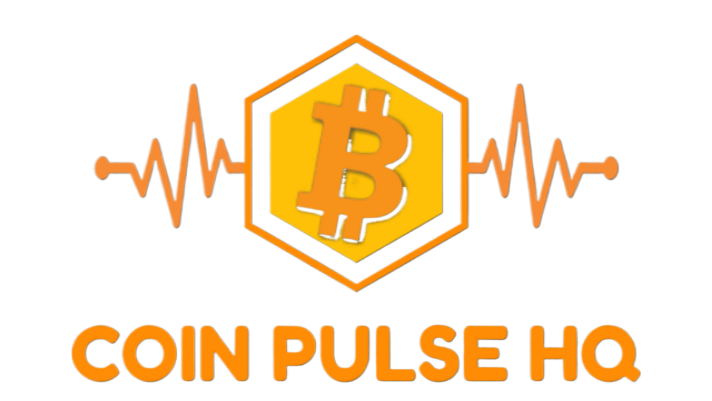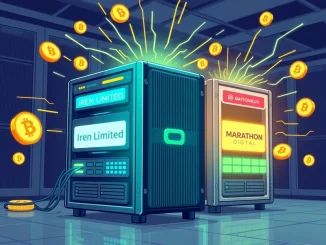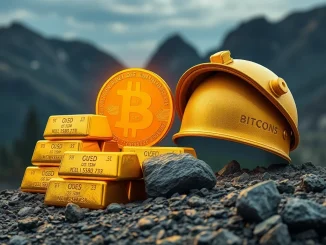
The cryptocurrency world is buzzing with a truly audacious prediction: a staggering 285,600% XRP price surge. Could this digital asset, often at the center of heated debates, truly climb from its current levels to an astonishing $10,000? A prominent crypto analyst, Pumpius, suggests this isn’t mere speculation but a meticulously calculated trajectory rooted in profound shifts within global finance. This deep dive explores the powerful forces behind this extraordinary forecast, from unprecedented institutional adoption to the transformative impact of the ISO 20022 standard and the burgeoning utility of the XRP Ledger for real-world assets.
Is a 285,600% XRP Price Surge Truly Possible?
The claim of a potential 285,600% XRP price increase, pushing its value from approximately $3.50 to an ambitious $10,000, might seem outlandish at first glance. However, crypto analyst Pumpius argues that this isn’t a flight of fancy but a consequence of fundamental, structural, and mathematical factors. As shared on X, this thesis posits that a confluence of institutional infrastructure, the burgeoning trend of real-world assets (RWA) tokenization, and deliberate price suppression strategies are aligning to propel XRP’s trajectory. Despite XRP trading near $3.34 in July 2025, a slight dip from its recent peak of $3.57, Pumpius maintains that the asset’s future valuation is less about transient market hype and more about its integral role in the control of global financial systems.
This perspective challenges conventional crypto market analysis, suggesting that XRP operates on a different paradigm. Instead of being solely driven by retail sentiment or short-term trading patterns, its value is seen as increasingly dictated by its utility within a transforming financial landscape. The analyst’s argument hinges on the idea that XRP is not just another digital coin but a foundational layer for a new era of finance.
How is Institutional Adoption Reshaping XRP’s Landscape?
According to Pumpius, institutional adoption is not a future aspiration for XRP but is already deeply embedded within its ecosystem. Several key developments underscore this claim:
- CME Group’s XRP Futures: The launch of CME Group’s XRP futures in May 2025 marks a significant milestone. This move provides regulated avenues for large financial institutions to gain exposure to XRP, signaling a growing comfort and confidence in the asset within traditional finance.
- XRP-Linked Exchange-Traded Products (ETPs): The emergence of products like Teucrium’s 2x leveraged XXRP ETF and the unleveraged XRPI further exemplifies this trend. These ETPs allow institutional investors to access XRP without directly holding the cryptocurrency, streamlining compliance and operational complexities.
- Strategic Holdings by Custodians: On-chain data reportedly shows that around 47 billion XRP, nearly 80% of the circulating supply, is held by custodians and large investors. This concentration of holdings suggests strategic positioning by significant players rather than mere speculative trading by individuals. It indicates a long-term vision for XRP’s role in their portfolios and operations.
Pumpius attributes this substantial institutional interest to XRP’s unique role as a settlement layer for tokenized assets. Large-scale institutional capital is increasingly integrating Ripple’s payment corridors into their broader financial infrastructure, leveraging XRP for efficient, low-cost cross-border transactions and liquidity management. This strategic integration is crucial for the projected XRP price growth, as it moves the asset beyond speculative trading into essential financial utility.
The XRP Ledger: Powering the Future of Real-World Assets?
A significant part of the bullish thesis for XRP revolves around its expanding utility in tokenizing real-world assets (RWAs). The XRP Ledger (XRPL) is positioned as a pivotal platform for digitizing a vast array of tangible and intangible assets, including:
- U.S. Treasuries and Corporate Bonds: Digitizing these traditional financial instruments on the XRPL could unlock new levels of liquidity and accessibility, allowing for fractional ownership and faster settlement.
- Real Estate: Tokenizing real estate assets can simplify property transactions, reduce intermediaries, and make global real estate investments more fluid.
- Bio-data: This innovative application suggests a future where even genetic or biological information could be tokenized, merging finance with advanced technology and potentially creating new markets for data ownership and utilization.
Partnerships are already forming to leverage the XRPL for these purposes. Ripple’s own RLUSD stablecoin, built on the XRPL, aims to provide a robust digital dollar for institutional use. Platforms like Ondo Finance are exploring the tokenization of yield-generating assets, while DNA Protocol is reportedly looking into digitizing genetic information. Pumpius claims this layered utility surpasses even the combined impact of Bitcoin and the internet, envisioning XRP as a foundational layer for a truly interconnected, digital global economy where the tokenization of real-world assets is seamless and efficient.
ISO 20022 and the End of XRP Price Suppression?
A controversial but central tenet of Pumpius’s argument is the alleged suppression of the XRP price. The analyst claims that prolonged legal battles, most notably the SEC’s case against Ripple, combined with coordinated market manipulation, have artificially constrained XRP’s true value. This suppression, it is argued, has prevented XRP from reflecting its inherent utility and institutional demand.
However, Pumpius predicts a significant shift with the widespread adoption of ISO 20022. This global standard for financial messaging is set to revolutionize how financial institutions communicate and conduct transactions worldwide. Once fully implemented, ISO 20022 could position XRP as a crucial liquidity token for cross-border transactions. Its efficiency, speed, and low cost would make it an ideal asset for facilitating global payments under the new standard. This integration into the core of global financial messaging is expected to dismantle the artificial price ceiling, triggering sustained appreciation and allowing the XRP price to reflect its true utility within a compliant, interconnected financial system.
Navigating the Challenges and the Grand Vision for XRP
While the $10,000 XRP price target implies an astronomical $600 trillion market cap—far exceeding the current global GDP—Pumpius offers a justification rooted in XRP’s unique positioning. The argument centers on XRP not as a typical cryptocurrency, but as a foundational asset for future financial systems. This perspective views XRP as a utility token that facilitates the movement and tokenization of trillions of dollars in value across various asset classes, rather than simply representing a store of value like gold.
The analyst cites several key factors as evidence for this bold claim:
- Legal Clarity: Ongoing legal developments, particularly in the US, are gradually providing more clarity on XRP’s regulatory status, which is crucial for greater institutional adoption.
- Expanding Use Cases: The continuous development of the XRP Ledger and its application in diverse areas like RWA tokenization and cross-border payments showcases its versatile utility.
- On-Chain Positioning: The significant holdings by large investors and custodians suggest a long-term strategic play rather than short-term speculation.
Skeptics, of course, remain unconvinced by such an ambitious forecast, pointing to the immense market capitalization required and the inherent volatility of the crypto market. However, the thesis put forth by Pumpius underscores a broader, ongoing debate about the profound influence of institutional capital and the potential for tokenized assets to fundamentally redefine global liquidity and financial infrastructure. The journey of XRP price will undoubtedly be one to watch as these powerful forces continue to unfold.
The bold predictions surrounding XRP’s future, particularly the astonishing 285,600% price surge to $10,000, are rooted in a compelling narrative of fundamental financial transformation. Driven by accelerating institutional adoption, the pivotal role of the XRP Ledger in tokenizing diverse real-world assets, and its strategic positioning within the evolving ISO 20022 global financial standard, XRP is presented as more than just a digital currency. It is envisioned as a foundational asset for the next generation of financial systems, capable of facilitating immense value transfer and liquidity. While the target remains audacious and invites skepticism, the underlying thesis highlights a profound shift in how digital assets are perceived and integrated into the global economy, making XRP a crucial barometer for the future of finance.
Frequently Asked Questions (FAQs)
What is the main driver behind the predicted XRP price surge?
The predicted XRP price surge is primarily driven by a combination of factors: increasing institutional adoption, its critical role in facilitating the tokenization of real-world assets (RWAs) on the XRP Ledger, and its expected integration as a key liquidity token within the global ISO 20022 financial messaging standard.
How is institutional adoption impacting XRP?
Institutional adoption is impacting XRP through the launch of regulated products like CME Group’s XRP futures and XRP-linked Exchange-Traded Products (ETPs). Additionally, a significant portion of XRP’s circulating supply is held by custodians and large investors, indicating strategic positioning rather than speculative trading, and leveraging Ripple’s payment corridors for cross-border transactions.
What are real-world assets (RWAs) and how does the XRP Ledger facilitate them?
Real-world assets (RWAs) are tangible or intangible assets from the traditional financial world, such as U.S. Treasuries, corporate bonds, real estate, and even bio-data, that are tokenized and brought onto a blockchain. The XRP Ledger facilitates this by providing a fast, efficient, and low-cost platform for digitizing these assets, enabling fractional ownership, faster settlement, and new liquidity streams.
What is ISO 20022 and why is it important for XRP?
ISO 20022 is a global standard for financial messaging that aims to modernize and standardize communication between financial institutions worldwide. It is important for XRP because, once widely adopted, XRP could become a key liquidity token for cross-border transactions within this new standard, potentially leading to sustained price appreciation as it integrates deeper into global payment systems.
Is the $10,000 XRP price target realistic?
The $10,000 XRP price target is highly ambitious and implies an enormous market capitalization that far exceeds current global economic figures. While skeptics point to these challenges, proponents argue it’s justified by XRP’s unique utility as a foundational asset for facilitating vast sums of value in a tokenized financial system, rather than just being a speculative cryptocurrency.
What are the main criticisms or challenges facing XRP?
The main criticisms and challenges facing XRP include the ambitious nature of its price predictions, the inherent volatility of the cryptocurrency market, ongoing regulatory uncertainties (such as past legal battles), and the need for widespread institutional and governmental adoption of the ISO 20022 standard and the XRP Ledger for its full potential to be realized.



